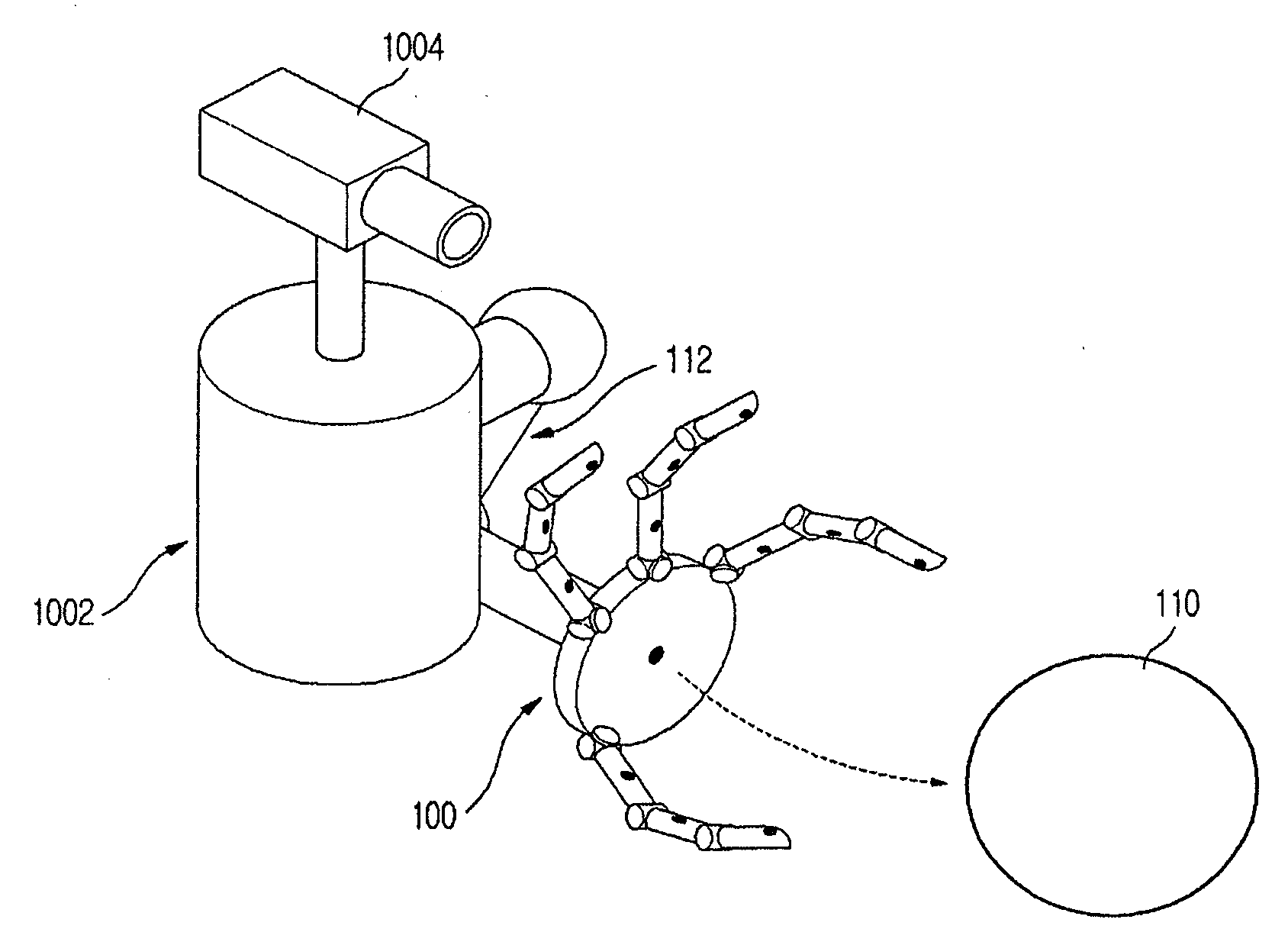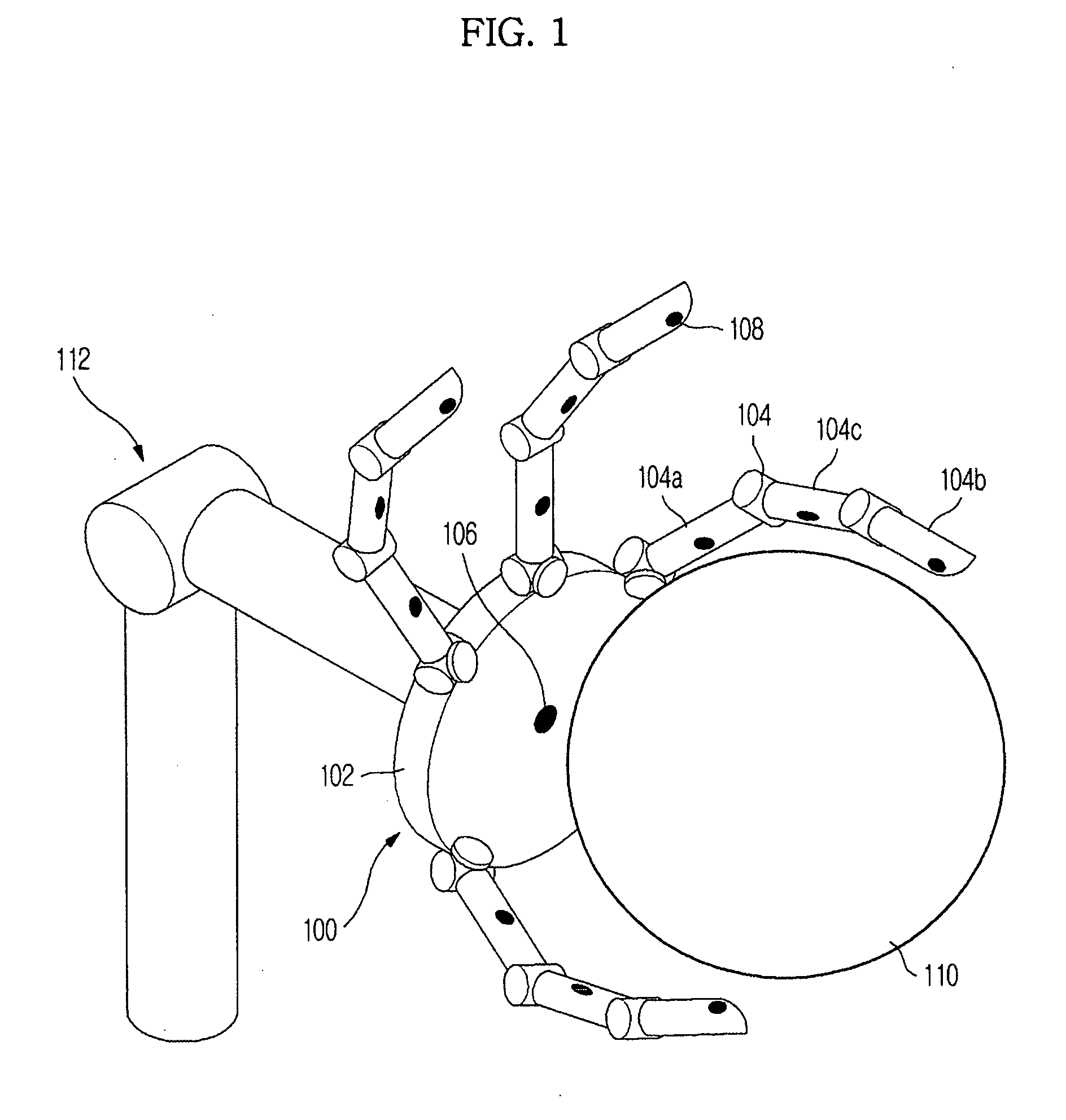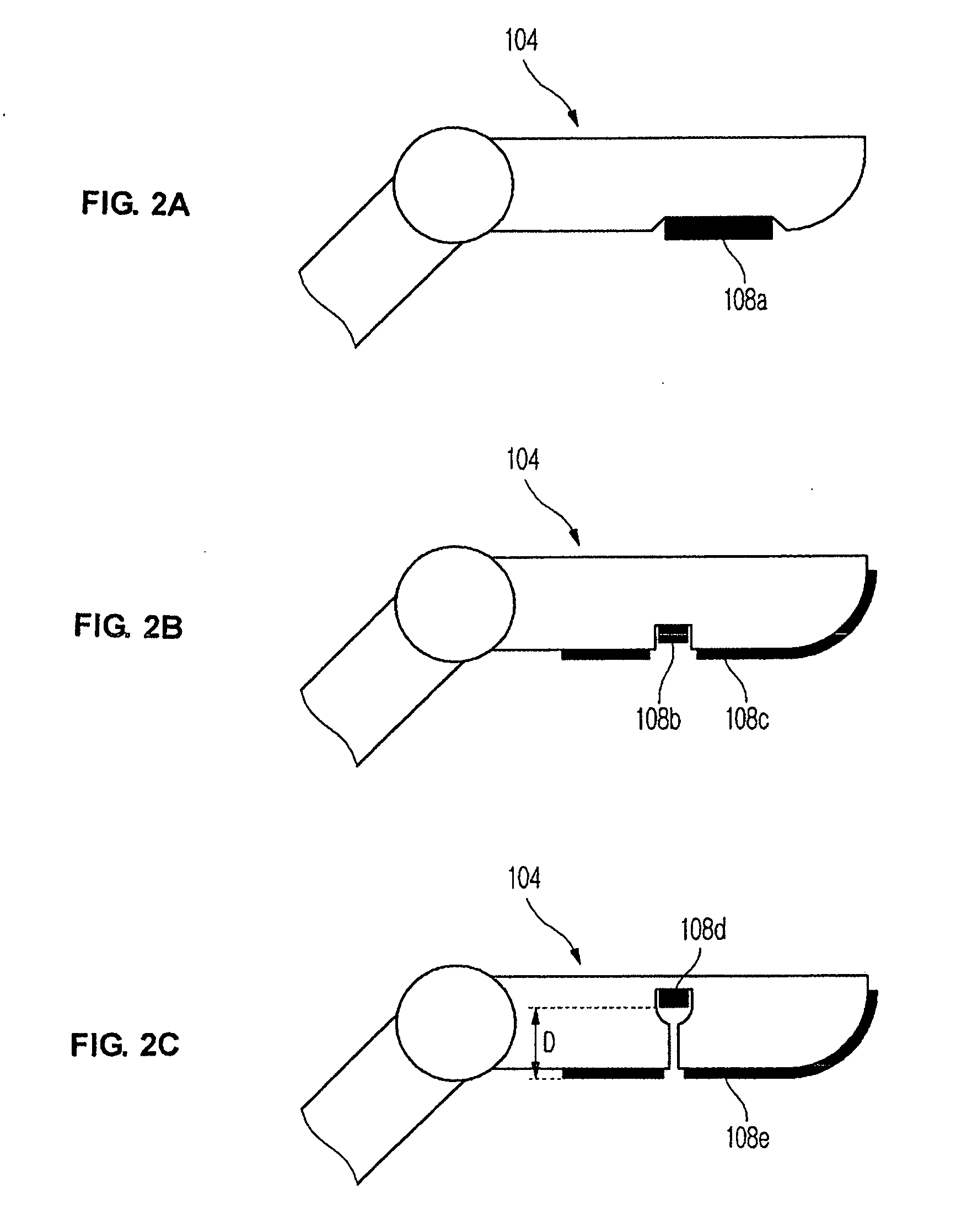Robot, robot hand, and method of controlling robot hand
a robot and hand technology, applied in the field of robots, can solve problems such as the inability to measure transparent objects, and achieve the effect of safe gripping the objects
- Summary
- Abstract
- Description
- Claims
- Application Information
AI Technical Summary
Benefits of technology
Problems solved by technology
Method used
Image
Examples
second embodiment
[0062]FIG. 4 is a flow chart illustrating a method of controlling a robot hand in accordance with the present invention, and FIGS. 5A to 5E are views illustrating operating states of the robot hand controlled by the method of FIG. 4. In FIG. 4 and FIGS. 5A to 5E, an operation given to the robot hand 100 is to grip the object 110. As shown in FIG. 4 and FIGS. 5A to 5E, a gripping route, i.e., a moving route of the robot hand 100 for approaching the object 110, is generated (402). The gripping route is generated based on the relative position data of the object 110 against the robot hand 100, which are provided in advance. The arm 112 is controlled such that the robot hand 100 approaches the object 110 along the gripping route (404).
[0063]When the robot hand 100 approaches the object 110, the arm 112 and the robot hand 100 are controlled such that the distances between all the distance sensors 108 of the robot hand 100 and the object 110 are equal (406). Although the robot hand 100 ap...
third embodiment
[0067]FIG. 6 is a flow chart illustrating a method of controlling a robot hand in accordance with the present invention, and FIGS. 7A to 7D are views illustrating operating states of the robot hand controlled by the method of FIG. 6. In FIG. 6 and FIGS. 7A to 7D, an operation given to the robot hand 100 is to grip the object 110. As shown in FIG. 6 and FIGS. 7A to 7D, a gripping route, i.e., a moving route of the robot hand 100 approaching the object 110, is generated (602). The gripping route is generated based on the relative position data of the object 110 against the robot hand 100, which are provided in advance. The arm 112 is controlled such that the robot hand 100 approaches the object 110 along the gripping route (604).
[0068]When the robot hand 100 approaches the object 110, the arm 112 and the robot hand 100 are controlled such that the distances between all the distance sensors 108 of the robot hand 100 and the object 110 are equal (606). Although the robot hand 100 approa...
fourth embodiment
[0071]FIG. 8 is a flow chart illustrating a method of controlling a robot hand in accordance with the present invention, and FIGS. 9A to 9D are views illustrating operating states of the robot hand controlled by the method of FIG. 8. In FIG. 8 and FIGS. 9A to 9D, an operation given to the robot hand 100 is to grip the object 110 having a much smaller size than that of the robot hand 100. As shown in FIGS. 9A to 9D, the object 110 has a quite small size, and thus can be sufficiently gripped by only the tip segments 108b of the plurality of fingers 104 without using the whole robot hand 100. As the occasion demands, the object 110 can be gripped by only the tip segments 108b of two fingers 104. Thus, the distances between the plurality of fingers 104 and the object 110 are measured by only the distance sensors 108 installed on the tip segments 104b of the plurality of the fingers 104. As shown in FIG. 8 and FIGS. 9A to 9D, a gripping route, i.e., a moving route of the robot hand 100 f...
PUM
 Login to View More
Login to View More Abstract
Description
Claims
Application Information
 Login to View More
Login to View More - R&D
- Intellectual Property
- Life Sciences
- Materials
- Tech Scout
- Unparalleled Data Quality
- Higher Quality Content
- 60% Fewer Hallucinations
Browse by: Latest US Patents, China's latest patents, Technical Efficacy Thesaurus, Application Domain, Technology Topic, Popular Technical Reports.
© 2025 PatSnap. All rights reserved.Legal|Privacy policy|Modern Slavery Act Transparency Statement|Sitemap|About US| Contact US: help@patsnap.com



